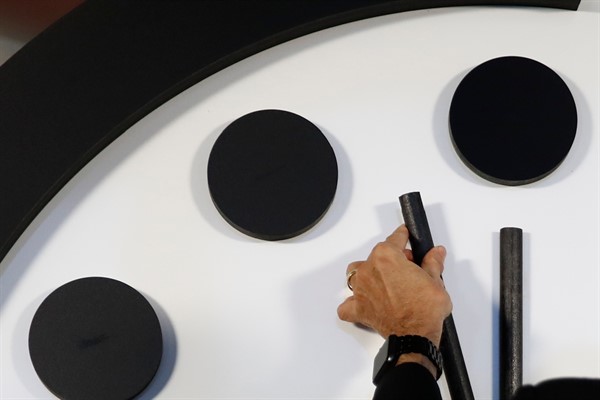Last Wednesday, the Bulletin of the Atomic Scientists, which celebrated its 75th anniversary in December, unveiled the latest installment of its famous “Doomsday Clock,” which purports to measure how close the world is catastrophe. When it first appeared in 1947, at the dawn of the nuclear age, its hands were set at 7 minutes to midnight. In the intervening years, it’s moved both closer to and farther from that witching hour. The most comforting installment appeared in 1991, amid the sudden end of the Cold War, when the Clock was reset to a sanguine 17 minutes to midnight.
That optimism has long since receded, replaced by pervasive foreboding. Last year, the Bulletin’s scientists moved the Clock’s hands to just 100 seconds to midnight, the closest ever to apocalypse. Last week, they left it unchanged, signaling their continued alarm. In making their call, the scientists cited the dangerous confluence of a fraying nuclear order, accelerating climate change and a raging pandemic.
It’s tempting to dismiss the Doomsday Clock as a gimmick trotted out each year by handwringing worrywarts with a vested interest in playing Chicken Little. The Clock’s very purpose, after all, is to instill fear, even existential dread, in the hopes of altering political behavior.

